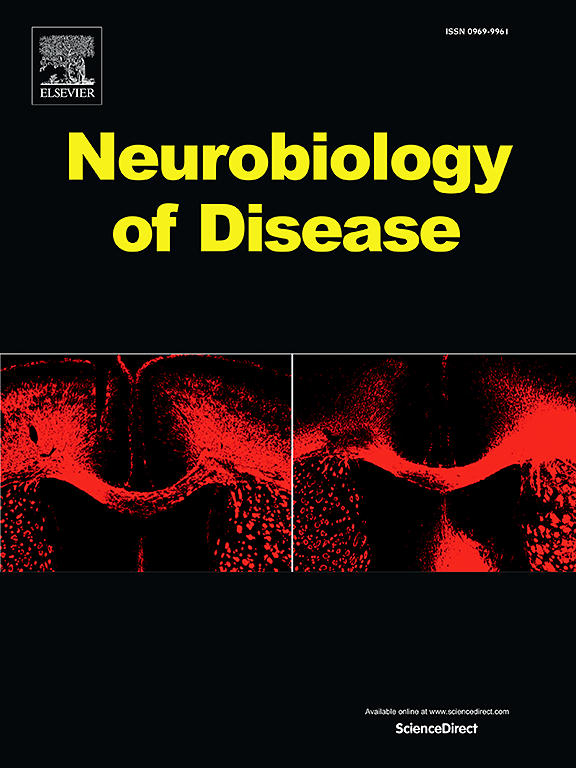KV7.2 channel dysfunction delays neuronal maturation and undermines early network development in a hiPSC model of KCNQ2-DEE
IF 5.6
2区 医学
Q1 NEUROSCIENCES
引用次数: 0
Abstract
KCNQ2 developmental and epileptic encephalopathy (KCNQ-DEE), is caused predominantly by dominant-negative loss-of-function variants in the KCNQ2 gene, leading to neonatal-onset epileptic seizures and profound neurodevelopmental impairment. Using patient induced pluripotent stem cells (iPSC)-derived neurons and complementary murine model, we found that dominant-negative KCNQ2 variants leading to diminished M-current cause depolarized resting membrane potential, reduced action potential generation and fragmented early network oscillations, all indicative of delayed neuronal development. These effects were most pronounced at immature developmental stages and replicated by pharmacological M-current inhibition, highlighting a critical role for Kv7.2 during early neuronal maturation.
Notably, our data challenge the prevailing view that KCNQ2-DEE symptoms are solely driven by hyperexcitability. Instead, we reveal a biphasic pattern in which loss of M-current delays the acquisition of basic functional properties in developing neurons, with potential consequences for synaptogenesis and cortical circuit formation. These findings provide a plausible cellular mechanism for the early-onset developmental delay observed in KCNQ2-DEE patients, even when seizures are effectively controlled. They raise the possibility that seizure-suppressing therapies such as carbamazepine may disrupt the development of immature networks, but further work is needed to assess clinical relevance.
在KCNQ2-DEE的hiPSC模型中,KV7.2通道功能障碍延迟神经元成熟并破坏早期网络发育。
KCNQ2发育性和癫痫性脑病(KCNQ-DEE)主要由KCNQ2基因的显性阴性功能丧失变异引起,导致新生儿癫痫发作和深度神经发育障碍。利用患者诱导的多能干细胞(iPSC)衍生的神经元和互补小鼠模型,我们发现KCNQ2的显性阴性变异导致m电流减少,导致静息膜电位去极化,动作电位产生减少和早期网络振荡碎片化,所有这些都表明神经元发育延迟。这些影响在未成熟发育阶段最为明显,并通过药物m电流抑制复制,突出了Kv7.2在早期神经元成熟过程中的关键作用。值得注意的是,我们的数据挑战了KCNQ2-DEE症状仅由过度兴奋性驱动的主流观点。相反,我们揭示了一种双相模式,在这种模式中,m电流的丧失延迟了神经元发育中基本功能特性的获得,这对突触发生和皮层回路的形成有潜在的影响。这些发现为在KCNQ2-DEE患者中观察到的早发性发育迟缓提供了一个合理的细胞机制,即使癫痫发作得到有效控制。他们提出了一种可能性,即卡马西平等癫痫抑制疗法可能会破坏不成熟神经网络的发育,但需要进一步的工作来评估临床相关性。
本文章由计算机程序翻译,如有差异,请以英文原文为准。
求助全文
约1分钟内获得全文
求助全文
来源期刊

Neurobiology of Disease
医学-神经科学
CiteScore
11.20
自引率
3.30%
发文量
270
审稿时长
76 days
期刊介绍:
Neurobiology of Disease is a major international journal at the interface between basic and clinical neuroscience. The journal provides a forum for the publication of top quality research papers on: molecular and cellular definitions of disease mechanisms, the neural systems and underpinning behavioral disorders, the genetics of inherited neurological and psychiatric diseases, nervous system aging, and findings relevant to the development of new therapies.
 求助内容:
求助内容: 应助结果提醒方式:
应助结果提醒方式:


